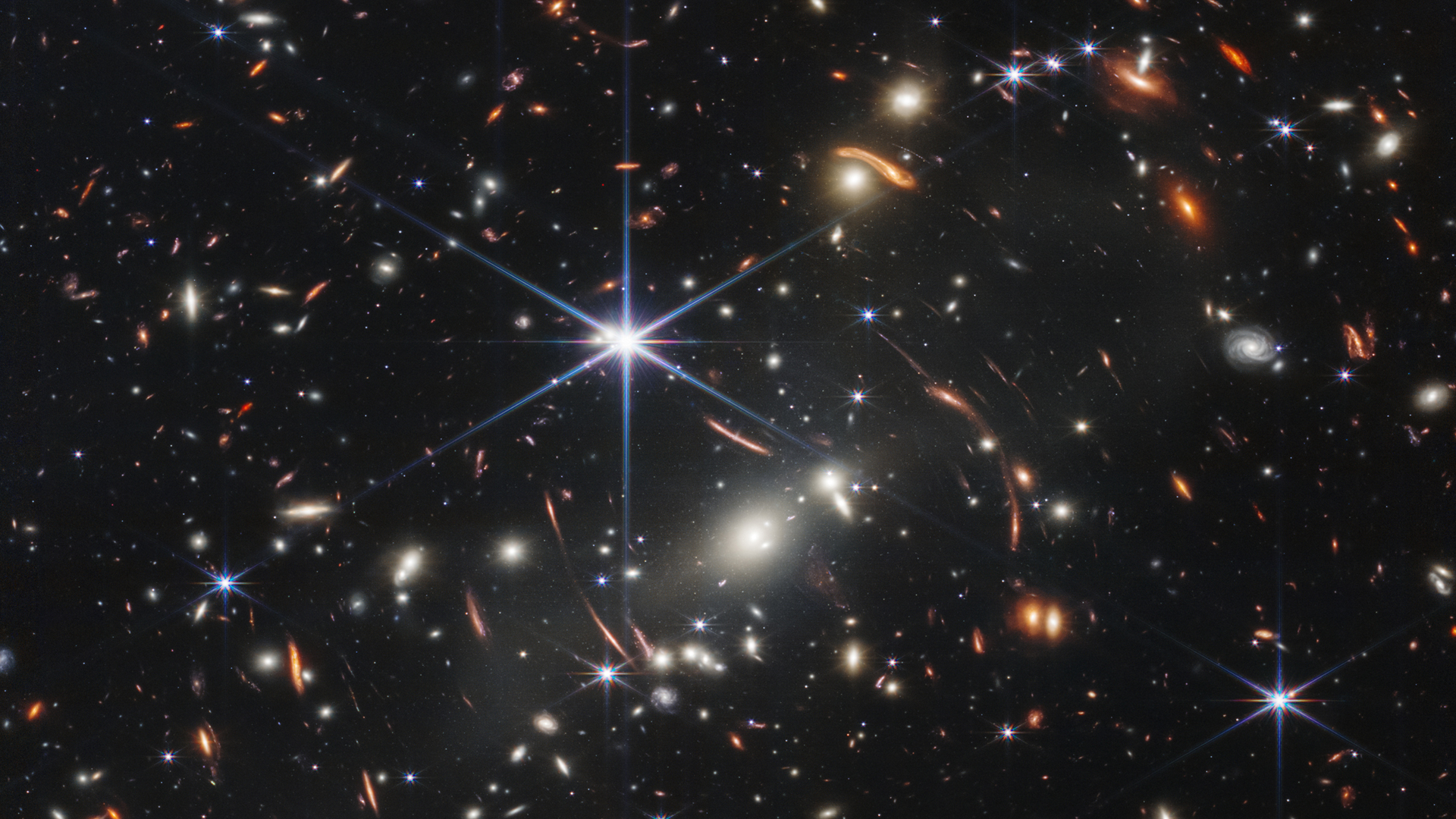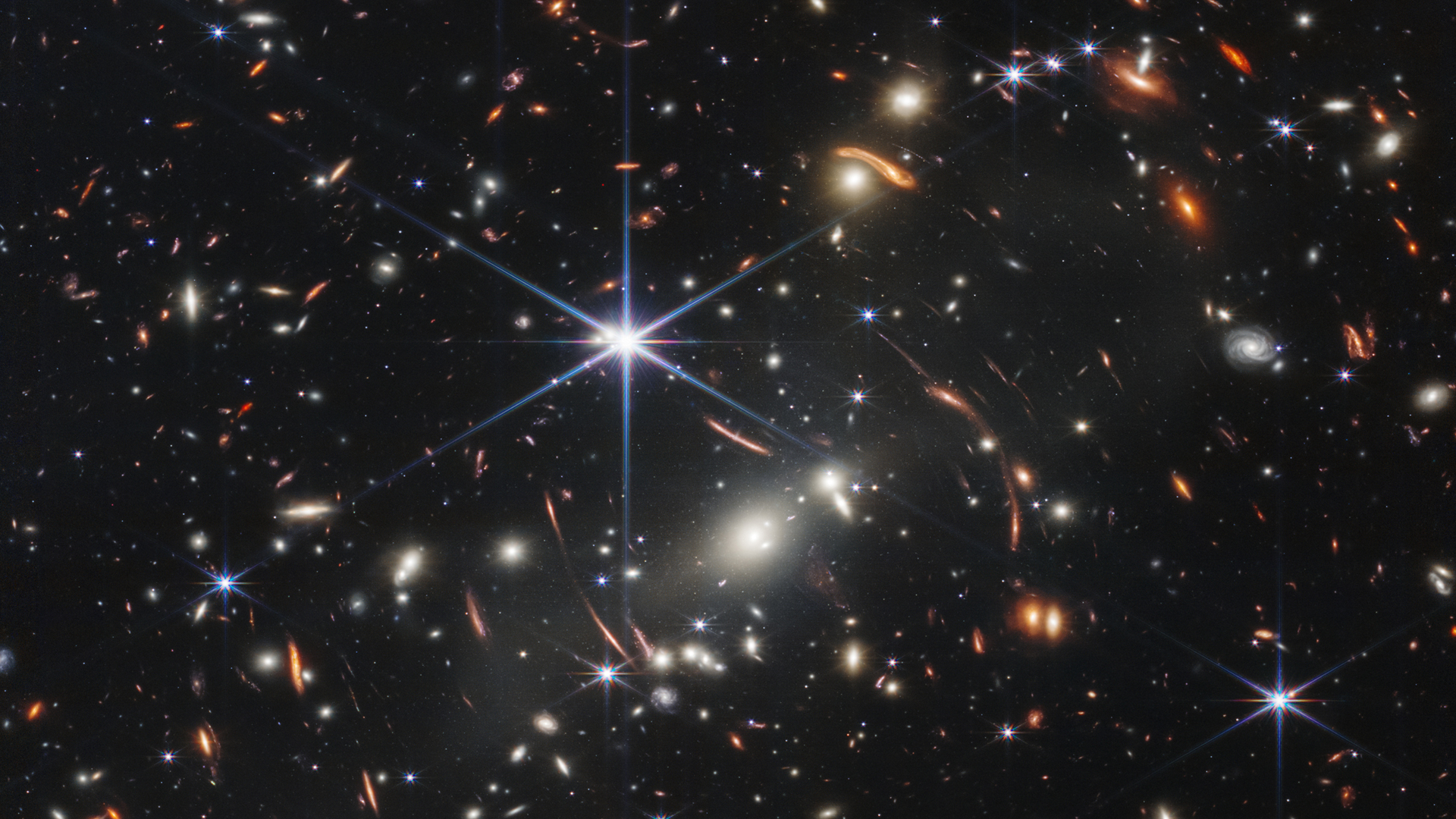Now Reading: Why do dwarf galaxies line up? ‘Zippers’ and ‘twisters’ in the early universe may solve a galactic mystery
-
01
Why do dwarf galaxies line up? ‘Zippers’ and ‘twisters’ in the early universe may solve a galactic mystery
Why do dwarf galaxies line up? ‘Zippers’ and ‘twisters’ in the early universe may solve a galactic mystery


Structures known as “zippers” and “twisters” in the early universe may explain why dwarf galaxies tend to line up with each other, as well as hint at how dark matter operates in the universe.
Every major galaxy like the Milky Way has a retinue of smaller dwarf galaxies orbiting it. The Milky Way has several dozen, including the famous Large and Small Magellanic clouds. Beginning in the 1970s, astronomers noticed that these dwarf galaxies’ positions and orbits weren’t entirely random. Instead, dwarf galaxies tended to exist within the same plane. For example, the 11 brightest satellites of the Milky Way share a plane, and many dwarf galaxies around the Andromeda galaxy form what is known as the Great Plane of Andromeda.
When confronted with an observational mystery like this, astronomers turn to computer simulations to try to understand what’s going on. That’s because we can see only a small fraction of all the matter in the cosmos — just the matter that emits light. The vast majority of the mass of every galaxy, both big and small, is in the form of mysterious, invisible dark matter.
We can’t directly observe dark matter, so we must use the simulations to piece together what that major component is doing and how it affects the visible galaxies. But computer simulations have routinely found that dwarf galaxies are just scattered everywhere, rather than being arranged into particular planes.
Because alignments of dwarf galaxies appear to be common, the theory of galaxy formation is at odds with observations. In a paper submitted to The Astrophysical Journal in April, a team of researchers led by Janvi Madhani at Johns Hopkins University dug deeper into sophisticated simulations to see if they could crack the mystery.
The team studied the evolution of 12 simulated galaxies that were similar to the Milky Way, following the flows of dark matter and gas over billions of years. Galaxies do not spring up in an instant. Instead, they grow over time as filaments of matter pour onto them, like a giant cosmic umbilical cord.
And it’s in these filaments that the researchers found how dwarf galaxies can align with each other. Previous research assumed that once dwarf galaxies formed, they would scatter into random orbits. But the new simulations followed the evolution of the gas to much greater resolution and precision, which allowed the researchers to forget assumptions and see what was actually happening.
Related: The faintest star system orbiting our Milky Way may be dominated by dark matter
The new study found that instead of scattering, the filaments can lock in with each other and enhance themselves. When they do this, they keep the dwarf galaxies confined to a single plane.
But the orientation of that plane depends on what happens to the filaments as new streams of gas connect to the same host galaxy. Sometimes, the filaments enhance each other, in what the researchers call a “zipper” — like the zipper merge you perform on a highway on-ramp. This creates a plane of gas that eventually evolves into a collection of dwarf galaxies.
Another case involves a “twister,” which is when a new filament merges with an existing one with a lot of angular momentum. This shifts the position of the plane but otherwise keeps it intact.
But if too many filaments connect to the same galaxy, then any pattern is destroyed and dwarf galaxies get random orbits.
Overall, the researchers found that we should expect planes of dwarf galaxies in roughly half — and perhaps up to 70% — of galaxies like the Milky Way and Andromeda.
RELATED STORIES:
Based on this work, there doesn’t appear to be any great tension between what we expect dark matter and gas to do when they build galaxies and what actually happens. So, although it doesn’t reveal a crack in our understanding of cosmology, it does solve a decades-long problem in astronomy.
Astronomers are especially interested in galaxy formation, especially in the early universe. Recently, the James Webb Space Telescope revealed rather mature galaxies appearing at surprisingly early times. Those galaxies could point the way to a new cosmological paradigm, or they might just be the result of a different kind of zipper-and-twister dance. Only more observations and better simulations will tell us.
Stay Informed With the Latest & Most Important News
Previous Post
Next Post
-
 012024 in Review: Highlights from NASA in Silicon Valley
012024 in Review: Highlights from NASA in Silicon Valley -
 02Panasonic Leica Summilux DG 15mm f/1.7 ASPH review
02Panasonic Leica Summilux DG 15mm f/1.7 ASPH review -
 03How New NASA, India Earth Satellite NISAR Will See Earth
03How New NASA, India Earth Satellite NISAR Will See Earth -
 04And Thus Begins A New Year For Life On Earth
04And Thus Begins A New Year For Life On Earth -
 05Astronomy Activation Ambassadors: A New Era
05Astronomy Activation Ambassadors: A New Era -
06SpaceX launch surge helps set new global launch record in 2024
-
 07Space Force plans new ‘Futures Command’ amid pressure to speed up modernization
07Space Force plans new ‘Futures Command’ amid pressure to speed up modernization




















